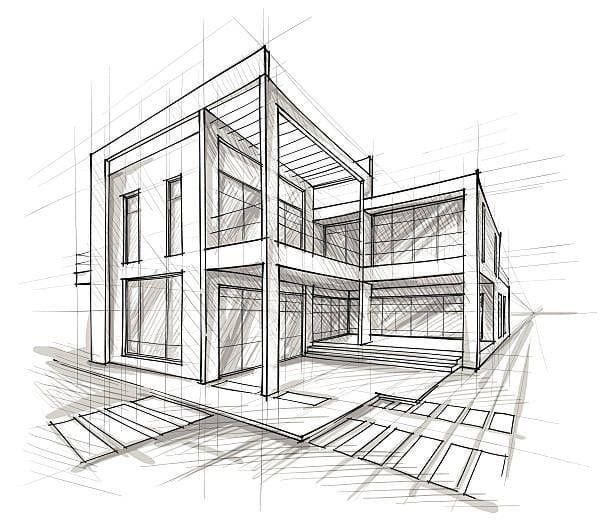
Understanding Real Estate Market Cycles
Real estate markets don’t move in a straight line. Instead, they follow somewhat predictable cycles that repeat over time, influenced by economic conditions, demographic shifts, and investor sentiment. Understanding these cycles can help investors, homebuyers, and sellers make more strategic decisions about when to enter or exit the market.
The Four Phases of Real Estate Market Cycles
Real estate markets typically move through four distinct phases:
1. Recovery
The recovery phase occurs after a market downturn when real estate activity begins to pick up:
- Vacancy rates start to decline
- Rental rates stabilize after previous declines
- New construction remains minimal
- Property values begin to show modest increases
- Investor interest gradually returns
- Financing becomes somewhat easier to obtain
During recovery, savvy investors often find opportunities to purchase undervalued properties before prices substantially increase.
2. Expansion
The expansion phase is characterized by accelerating growth:
- Vacancy rates fall below long-term averages
- Rental rates increase steadily
- New construction activity ramps up
- Property values rise more rapidly
- Transaction volume increases significantly
- Financing becomes readily available
- Media coverage turns increasingly positive
This phase often sees the greatest price appreciation and can last for several years, creating wealth for property owners.
3. Hyper-Supply
The hyper-supply phase occurs when the market becomes overheated:
- New construction exceeds demand
- Vacancy rates begin to rise
- Rental growth slows or flattens
- Property values continue rising but at a slower pace
- Financing terms may begin to tighten
- Market sentiment remains positive despite warning signs
During this phase, careful investors begin to recognize the signs of an overextended market and may consider reducing their exposure.
4. Recession
The recession phase represents a market correction:
- Vacancy rates increase substantially
- Rental rates decline
- New construction halts
- Property values fall
- Transaction volume decreases dramatically
- Financing becomes difficult to obtain
- Foreclosures and distressed sales increase
This phase is challenging for most market participants but can create buying opportunities for those with cash reserves and a long-term perspective.
Factors Influencing Market Cycles
Several key factors drive real estate market cycles:
Economic Indicators
- Interest rates and monetary policy
- Employment growth or contraction
- GDP growth rates
- Consumer confidence
- Inflation rates
Demographic Shifts
- Population growth or decline
- Household formation rates
- Migration patterns
- Aging population dynamics
Supply Factors
- Construction costs
- Land availability
- Building permit activity
- Regulatory environment
- Infrastructure development
Capital Markets
- Availability of financing
- Lending standards
- Investment capital flows
- REIT activity
- Foreign investment levels
Regional Variations in Market Cycles
Real estate cycles don’t affect all markets simultaneously or with equal intensity. Different regions often experience asynchronous cycles due to:
- Local economic conditions
- Population trends
- Employment diversity
- Geographic constraints
- Regulatory environments
For example, a technology hub experiencing rapid job growth might remain in expansion while manufacturing-dependent regions enter recession.
Practical Applications of Cycle Knowledge
Understanding where the market stands in the cycle can inform various real estate decisions:
For Investors:
- Recovery phase: Acquisition opportunities for long-term holdings
- Expansion phase: Consider development projects or property improvements
- Hyper-supply phase: Exercise caution with new acquisitions, consider selling non-core assets
- Recession phase: Prepare for distressed acquisition opportunities if adequately capitalized
For Homebuyers:
- Recovery phase: Good time to buy before significant price increases
- Expansion phase: Rising prices may make entry more difficult
- Hyper-supply phase: Consider waiting for potential price corrections
- Recession phase: Potential buying opportunities if financially secure
For Developers:
- Recovery phase: Secure land positions and begin entitlement processes
- Expansion phase: Active construction and marketing
- Hyper-supply phase: Complete current projects but avoid starting new ones
- Recession phase: Focus on survival and maintaining liquidity
Time Horizons Matter
The impact of market cycles varies greatly depending on your time horizon:
- Short-term speculators (1-2 years) are highly vulnerable to cycle timing
- Medium-term holders (5-10 years) may experience a complete cycle
- Long-term investors (10+ years) can often weather cyclical fluctuations successfully
Warning Signs of Cycle Transitions
Learning to recognize signals of phase shifts can provide a competitive advantage:
Recovery to Expansion:
- Accelerating absorption rates
- Increasing transaction volume
- Growing investor interest
Expansion to Hyper-Supply:
- Construction cranes dominating the skyline
- Speculative development increasing
- Land prices reaching historical highs
- “This time is different” narratives emerging
Hyper-Supply to Recession:
- Rising vacancy rates despite continued optimism
- Slowing of previously hot markets
- Tightening lending standards
- Extended marketing periods for properties
Conclusion
While no one can perfectly time real estate market cycles, understanding their patterns and indicators can help you make more informed decisions. By recognizing where the market stands and what likely comes next, you can position yourself to capitalize on opportunities and mitigate risks throughout the inevitable ebbs and flows of the real estate market.
Remember that different property types and geographic locations may experience these cycles at different times and intensities, making local market knowledge essential for successful real estate endeavors.











